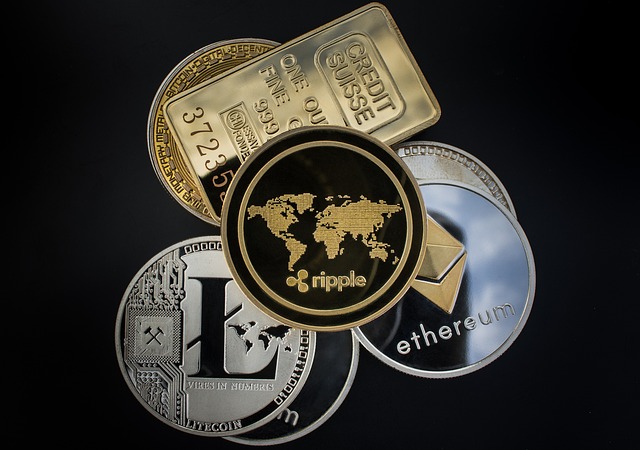Gold IRA vs Roth IRA: A Comprehensive Comparison
As individuals approach retirement, they face a crucial decision: which type of Individual Retirement Account (IRA) is best suited for their needs? In this article, we’ll delve into the world of Gold IRAs and Roth IRAs, exploring their core components, historical context, global impact, economic considerations, technological advancements, policy and regulation, challenges and criticisms, case studies, future prospects, and finally, provide a conclusion and FAQ section.
Understanding Gold-IRA-vs-Roth-IRA
A Gold IRA is a self-directed retirement account that allows investors to hold physical gold, silver, or other precious metals in addition to traditional assets like stocks and bonds. On the other hand, a Roth IRA is a type of Individual Retirement Account that provides tax-free growth and withdrawals in retirement. Both types of IRAs offer unique benefits and challenges.
Global Impact and Trends
The global influence of Gold IRAs and Roth IRAs can be seen in their widespread adoption across various regions. The United States, for example, has over 45 million IRA accounts, with a significant portion being self-directed. In Europe, the trend is shifting towards alternative investments, including precious metals.
Key trends shaping the trajectory of Gold IRAs and Roth IRAs include:
- Increasing demand for alternative assets
- Rising popularity of self-directed retirement accounts
- Growing concern about market volatility and economic uncertainty
Economic Considerations
The economic aspects of Gold IRAs and Roth IRAs are crucial to understanding their impact. Market dynamics, investment patterns, and the role of these IRAs in economic systems are all interconnected.
Some key economic considerations include:
- Inflation: As inflation rises, investors may turn to gold as a hedge against currency devaluation.
- Interest Rates: Changes in interest rates can affect investment returns and the appeal of Gold IRAs and Roth IRAs.
- Market Volatility: Investors seeking stability during market downturns may opt for precious metals or other alternative assets.
Technological Advancements
Significant technological advancements have transformed the way we invest, including:
- Online Trading Platforms: Ease of access to markets and investment products has increased
- Cryptocurrencies: The rise of digital currencies has expanded investment options
- Robo-Advisors: Automated investment management has become more accessible
These advancements have created new opportunities for investors, but also pose challenges in terms of regulation and oversight.
Policy and Regulation
Policies and regulations governing Gold IRAs and Roth IRAs are crucial to understanding their development. Key frameworks include:
- Taxation: The tax treatment of contributions, growth, and withdrawals varies between Gold IRAs and Roth IRAs
- Investment Options: Rules regarding eligible investments for each type of IRA exist
- Custodianship: Regulations surrounding the holding and management of physical assets in a Gold IRA
Challenges and Criticisms
Despite their benefits, Gold IRAs and Roth IRAs face challenges and criticisms:
- Lack of Regulation: Concerns about oversight and enforcement exist
- Confusion: Investors may be overwhelmed by the different types of IRAs and investment options
- Market Risks: The value of precious metals and other alternative assets can fluctuate
To overcome these challenges, investors must educate themselves on the benefits and drawbacks of each type of IRA.
Case Studies
In-depth case studies demonstrate successful applications of Gold IRAs and Roth IRAs:
- Example 1: A retiree uses a Gold IRA to diversify their portfolio and protect against inflation.
- Example 2: An investor contributes to a Roth IRA to grow their retirement savings tax-free.
These case studies illustrate the potential benefits of each type of IRA, but also highlight the importance of individual circumstances and investment goals.
Future Prospects
The future outlook for Gold IRAs and Roth IRAs is shaped by emerging trends:
- Growing demand for alternative assets
- Increased adoption of self-directed retirement accounts
- Expanding investment options
Investors must consider these factors when making decisions about their retirement savings.
Conclusion
In conclusion, understanding the differences between Gold IRAs and Roth IRAs is crucial for investors seeking to optimize their retirement savings. This article has provided a comprehensive overview of the benefits, challenges, and future prospects of each type of IRA. By considering individual circumstances, investment goals, and market trends, investors can make informed decisions about which type of IRA best suits their needs.
FAQ Section
Q: What is the main difference between a Gold IRA and a Roth IRA?
A: A Gold IRA allows investors to hold physical gold or other precious metals, while a Roth IRA provides tax-free growth and withdrawals in retirement.
Q: Which type of IRA is better for me?
A: The choice depends on individual circumstances, investment goals, and market trends. Investors should consider their income, expenses, and risk tolerance before making a decision.
Q: Can I invest in other alternative assets besides gold within an IRA?
A: Yes, some IRAs allow investments in other alternative assets, such as real estate or cryptocurrencies. However, investors must ensure compliance with relevant regulations and tax laws.
By answering these FAQs, we aim to provide clarity and enhance reader engagement on the topic of Gold IRAs vs Roth IRAs.

Choosing the Best Gold IRA Companies for Wyoming’s Retirement Strategies
Wyoming residents have access to Gold IRA companies that offer a strategic investment opportunity w…….
Read More
Optimal Gold IRAs: Top-Rated Companies in Wyoming
Gold IRAs are a smart way to diversify retirement portfolios by including physical gold and other pr…….
Read More
2024 Guide to Top Gold IRA Companies in Wyoming
2024 represents a strategic time for investors to consider adding physical gold to their retirement …….
Read More
Optimizing Your Retirement Savings: Top-Rated Gold IRA Companies in Wyoming for 2023
2023 marks a significant year for Wyoming investors considering a Gold IRA, with the state offering …….
Read More
Optimizing Retirement Savings with Gold IRAs: Top Wyoming Companies Compared
Wyoming residents considering retirement investment strategies might explore Gold IRAs as a method …….
Read More
Optimizing Retirement Savings: Top-Rated Gold IRA Companies in Wyoming
Gold IRA accounts in Wyoming offer investors the opportunity to diversify their retirement portfolio…….
Read More
Optimizing Retirement Savings with Top-Rated Gold IRA Companies in Wyoming
Wyoming's Gold IRA companies offer residents a specialized retirement investment option by all…….
Read More
2024’s Top Gold IRA Companies in Wyoming: A Comprehensive Guide
2024 is a significant year for those considering a Gold IRA, with Wyoming's industry being part…….
Read More